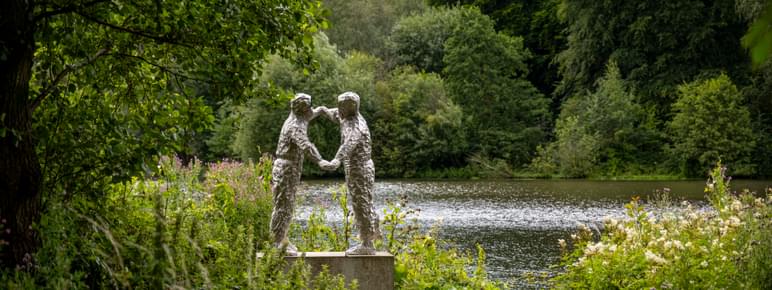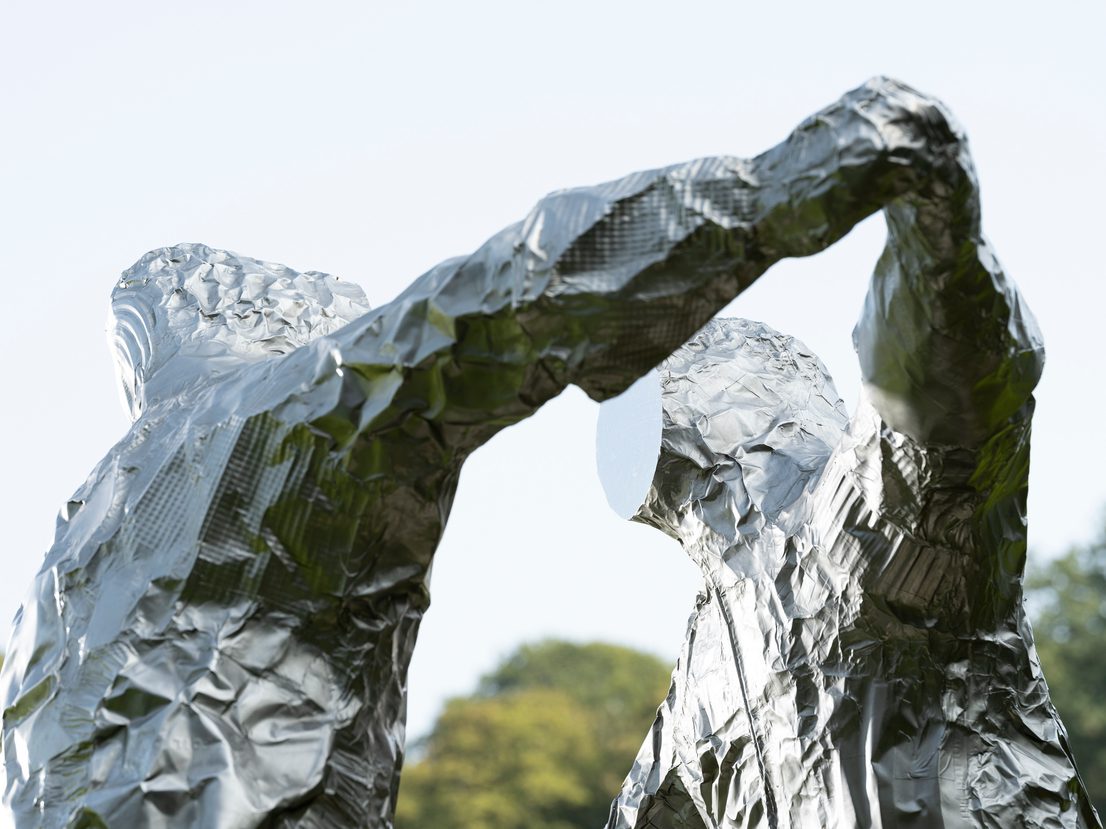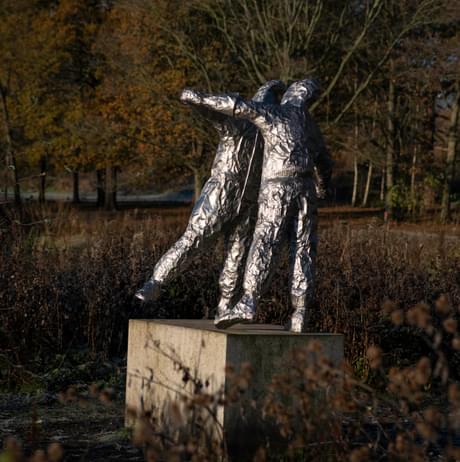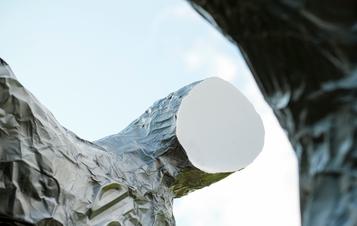
Tom Friedman: Hazmat Love
Art Outdoors /Tom Friedman: Hazmat Love
Tom Friedman is an American artist who uses everyday materials to make playful sculptures, installations, paintings and animations. Since 2007, he has created small models from aluminium foil, takeaway containers and baking trays. These disposable materials, usually found in domestic settings, can be easily shaped and creased.
Hazmat Love depicts two figures who might be embracing, wrestling or dancing together. The relationship between them is unclear and their facial expressions are hidden by mirrored masks. The individuals are clothed in hazmat suits, which are worn to guard against chemical, nuclear and biological threats. They are used by paramedics, firefighters, and workers responding to environmental emergencies, spillages and contamination. Working in a hazmat suit is strenuous, and this is reflected in the heavy and awkward movement of the figures’ limbs.

This stainless-steel sculpture was first created using oven roasting trays to resemble baggy fabric, elastic, boots and thick gloves. The model was then cast in stainless steel, and the surface polished. The marks and folds made by the artist can still be seen in the surface of the work.
Friedman described Hazmat Love as a scene of "dystopian romance – love in a toxic environment". The danger or threat that the pair are shielding from is left to our imagination. However, the metallic figures might exist in a future not so different from our present. In Friedman’s sculpture the hazmat suit acts as both defensive armour and isolating barrier.
You might also like
- Art Outdoors

Leiko Ikemura: Usagi Kannon II
Usagi Kannon II [Rabbit Madonna] is one of Ikemura’s most significant motifs. Her hybrid creature with rabbit ears and a crying, human face acts as symbol of universal mourning, first created in 2011 in response to the Fukushima nuclear disaster in Japan. - Profile

Simon Armitage CBE
- News

The Weston Restaurant named winner of Trip Advisor Travellers' Choice Award
28 September 2023 - Art Outdoors

Andy Goldsworthy: Outclosure


